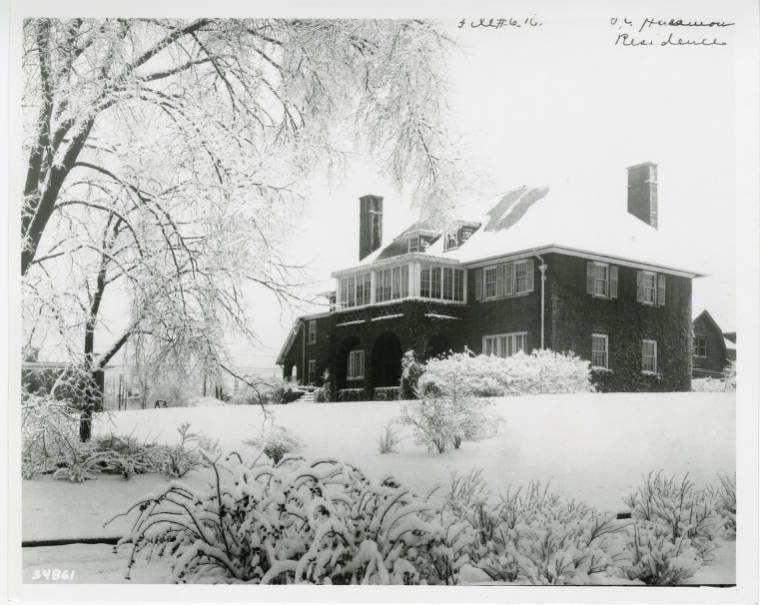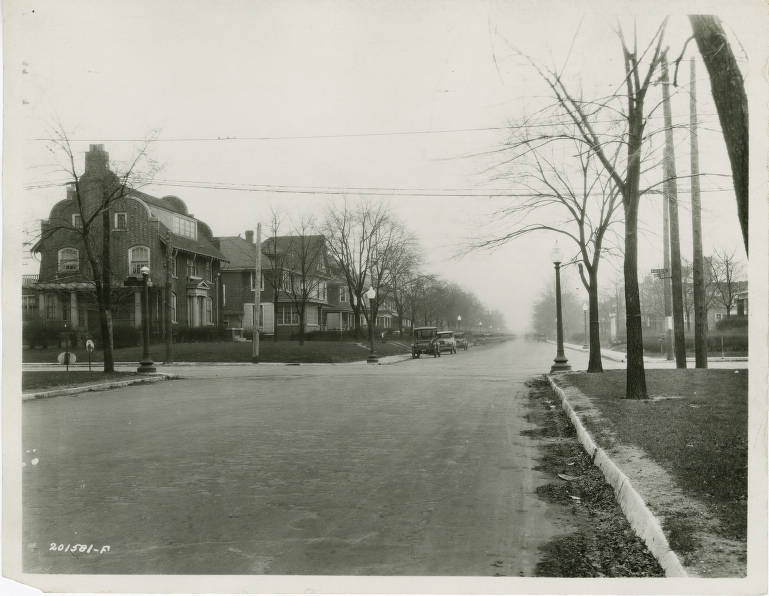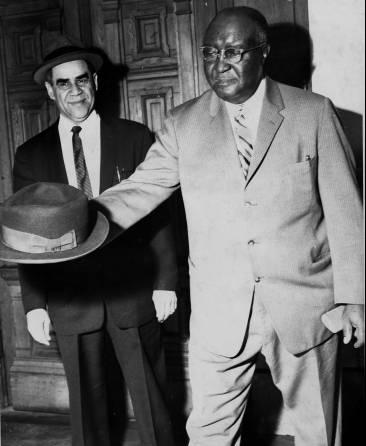Meridian Park is an early-20th -century residential neighborhood sitting three miles north of Monument Circle. It is bounded by 30th Street, 34th Street, Pennsylvania Street, and Washington Boulevard. Streets located within its boundaries in part or in whole include 31st , 32nd , 33rd , Delaware, and Talbott. Since 1990, the neighborhood has been listed on the National Register of Historic Places in recognition of its noteworthy and eclectic architecture, primarily for its impressive collection of American Arts and Crafts-style homes mixed with distinctive period revival influences.

Historically, the area is a product of the northern migration of Indianapolis’ well-do-do population, as neighborhoods with large homes continued to develop further away from downtown and flourish along or near the North corridor. With the growing popularity of the personal automobile, along with the construction and expansion of , the area which now includes Meridian Park developed into an ideal suburban environment for those wanting the distance themselves from the noise and smoke of the city.
The earliest plat in the neighborhood is the University Place Addition which dates to 1890. It is one of five principal plats (along with their subdivisions) that include what is now Meridian Park. Today, there are nearly 280 parcels that can be found in the neighborhood, of which the majority contain single-family homes. Included in the mix are a small number of multi-family and commercial structures. Although a few late-19th-century and modern buildings are within the neighborhood’s confines, most of the homes date from the early 1900s.

The boundaries of the neighborhood are well-defined by the scale and craftsmanship of its homes. When compared to the immediate surrounding areas, Meridian Park’s dominant architectural styles include Arts and Crafts, Tudor Revival, American Four-Square, and Colonial Revival. Many homes were designed by some of the most sought-after Indianapolis and regional architects of the era, including , , Clarence Martindale, , and . Even the handful of bungalow-style homes in the neighborhood are oversized or have features not typically found in other neighborhoods.
Of note, Meridian Parks’ largest home was designed by Chicago architect Howard Van Doren Shaw (he also designed U.S. Vice President mansion at 30th and Meridian Streets). Another Chicago architect, Robert Spencer Jr., a friend of Frank Lloyd Wright, designed a Prairie-style house in the neighborhood that was one of three homes featured in a 1909 issue of .

In addition to the neighborhood being on the National Register of Historic Places, a private home and a multi-family residence within it also share register status— and the Esplanade Apartments.
Many of Indianapolis’ early 20th-century influential leaders called the neighborhood home including: Henry Hornbrook (attorney, cofounder Indianapolis Foundation), George Marott (Marott Shoe Store and ), Arthur Bohn, H. J. Lacy (Lacy Diversified Industries), Louis C. Huesmann (Central Supply Co., early donator to the Riley Memorial Association), , (World War I fighter ace and Distinguished Service Cross recipient), (chief judge of the Indiana Court of Appeals), Frank Beckwith (believed to be the first African American to run for U.S. president). L. S. Ayres couturier George Philip Meiers and his wife Nellie Simmons Meiers, palm reader to the famous and infamous, brought some international notoriety with a vast array of early 20th-century celebrities visiting the neighborhood.
By the early 1960s, “white flight” took hold in the urban core of the city as a significant number of upper- and middle-class residents moved to suburban areas. Combined with the fact that most of the housing stock was now aged 50 years and older, homes in the neighborhood during this period fell into disrepair and many were subdivided into apartments.
Beginning in the mid-1970s, the neighborhood began to be revitalized. A crime watch block club turned into the first neighborhood association in 1982. In 1988, neighbors worked with to research home histories and apply for National Register of Historic Places status, which was officially granted by the U.S. Department of the Interior in 1990.
The pace of home restorations increased over the next two decades as did the social activity. Signature events added in the late 1990s include an annual Cajun Brunch/New Neighbor Reception, Summer Barbecue, Fall Festival Chili Cook-off and Cornbread Competition, and a Christmas party.
Periodic home tours started in the late 1980s and continued throughout the following decades. It was during one of these tours, the neighborhood introduced the concept of the ‘Welcoming Porch’ inviting everyone with or without a home tour ticket to enjoy a cool drink and talk with neighbors about life in Historic Meridian Park. In 2004 residents organized a national Arts and Crafts Symposium in conjunction with an Arts and Craft exhibition at the .
In 2006, the neighborhood celebrated its centennial with activities ranging from a Home & Garden Tour to a beautification charrette in partnership with Ball State’s Center for Architecture and Planning to a neighborhood-wide homecoming picnic for former residents. In 2012, the neighborhood added to its robust roster of annual social activities a progressive dinner, and in 2016 started a Shamrock Porch Crawl around the St. Patrick’s Day holiday.
In 2013 neighborhood association discussion turned to purchasing and converting two vacant lots into a pocket park. Through grants and donations over the next six years, a handsome, shared community space was developed with a shelter, picnic tables, children’s play equipment, fence, and sidewalk. By 2018 the pocket park became a favorite gathering place for families and neighborhood association activities.

Help improve this entry
Contribute information, offer corrections, suggest images.
You can also recommend new entries related to this topic.